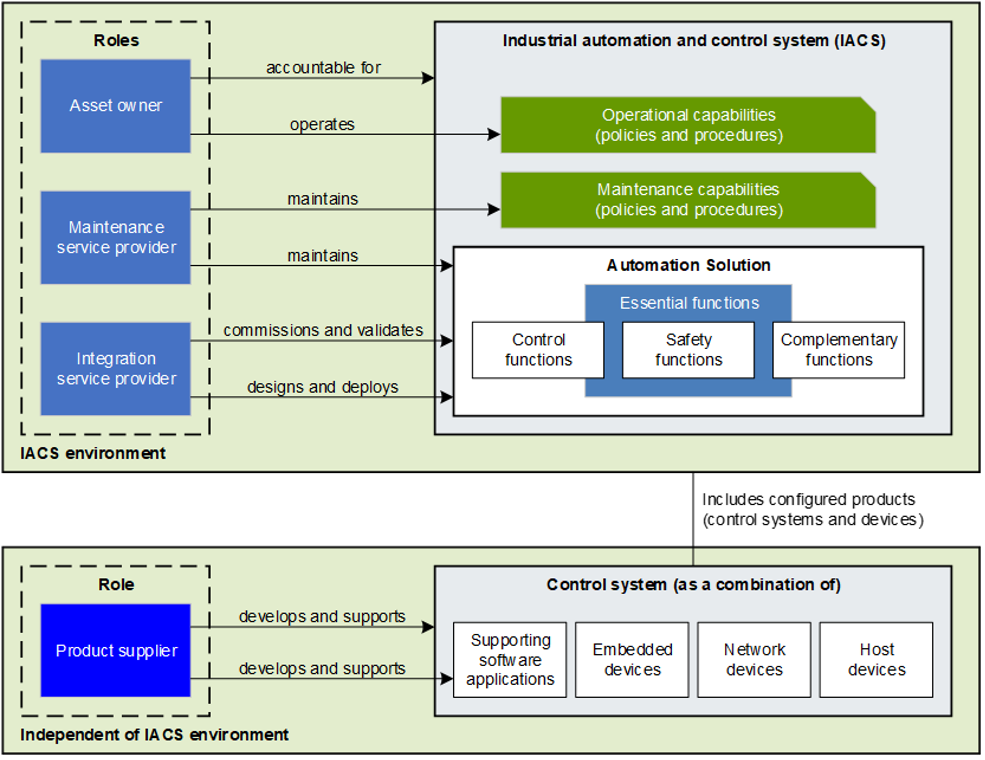We have just published the IoT Security Maturity Model: 62443 Mappings for Asset Owners and Product Suppliers white paper. This paper is a joint publication of the Industry IoT Consortium® (IIC™) and the International Society of Automation™ (ISA). Our collaboration has been a good experience and will continue. Next is planned an update to include Service Providers. The IIC press release has comments by some of the contributors.
This document extends our previously published technical report, the IoT Security Maturity Model (SMM): Practitioner’s Guide. That document describes the principles and process for setting targets and assessments for security maturity, breaking down the expanse of security concerns into eighteen practices in the three domains of governance, enablement and hardening. These practices include governance, technical and non-technical controls and operational aspects. This is shown in the following diagram from the Practitioner’s Guide:

Each practice description gives information and guidance on the four comprehensiveness levels of minimum (1) , ad hoc (2), consistent (3) and formalized (4) with descriptions of each, including what needs to be done to achieve the level, and indicators of accomplishment (useful for assessments). A key idea is that unlike other maturity models, higher levels are not necessarily better. Rather, the appropriate comprehensiveness level for each practice should be chosen to match the need, limiting investment to what is required and makes sense.
The SMM is designed to be extensible, with profiles that expand the scope to industry or system specifics, and with mappings that relate the guidance to other frameworks and requirements.

Profiles are one way of extending the SMM Security Maturity Model. While the practitioner’s guide describes the general case, or general scope, it also permits guidance appropriate to industry or system specific scope to be added to the general guidance. For example, we have previously published in collaboration with the OMG the IoT SMM: Retail Profile for Point-of-Sale Devices offering additional guidance relevant to retail. It includes industry scope level guidance, such as using Data Security Standard (PCI-DSS), Payment Application Data Security Standard (PA- DSS), and the PIN Transaction Security Devices (PTS) to achieve the consistent comprehensiveness level (level 3) for the compliance management practice, to give an example. It also includes device scope guidance for the compliance management level 3 with the requirement to ensure compliance with PIN Transaction Security Devices.
Another way of extending the SMM is with mappings. This newest publication is a set of mappings to the 62443 standards. This provides a linkage between the guidance for a specific comprehensiveness level in a practice to related 62443 requirements. One way to use this is to determine the maturity target, setting comprehensiveness levels for each practice using the Practitioner’s Guide for guidance. Once this is done then the mappings for the appropriate comprehensiveness levels (and the lower ones which must also be met to achieve a comprehensiveness level) can be used to review the appropriate 62443 requirements.
The current 62443 mappings focus on the needs of Asset Owners and Product Suppliers as defined in that document, a subsequent revision will add service providers. The following diagram from the mappings publication (derived from ISA documentation) shows the roles:

We are working on a later update to add Service Providers to the mappings document.
Thus with the general guidance of the IoT Security Maturity Model (SMM): Practitioner’s Guide, industry and system profiles such as the IoT SMM: Retail Profile for Point-of-Sale Devices (with more coming) and with mappings guidance such as the IoT Security Maturity Model: 62443 Mappings for Asset Owners and Product Suppliers we believe security maturity assessment should be thorough, actionable and can be related and managed in conjunction with other approaches such as the use of the 62443 standards.
We are excited about this work and hope you find it useful.